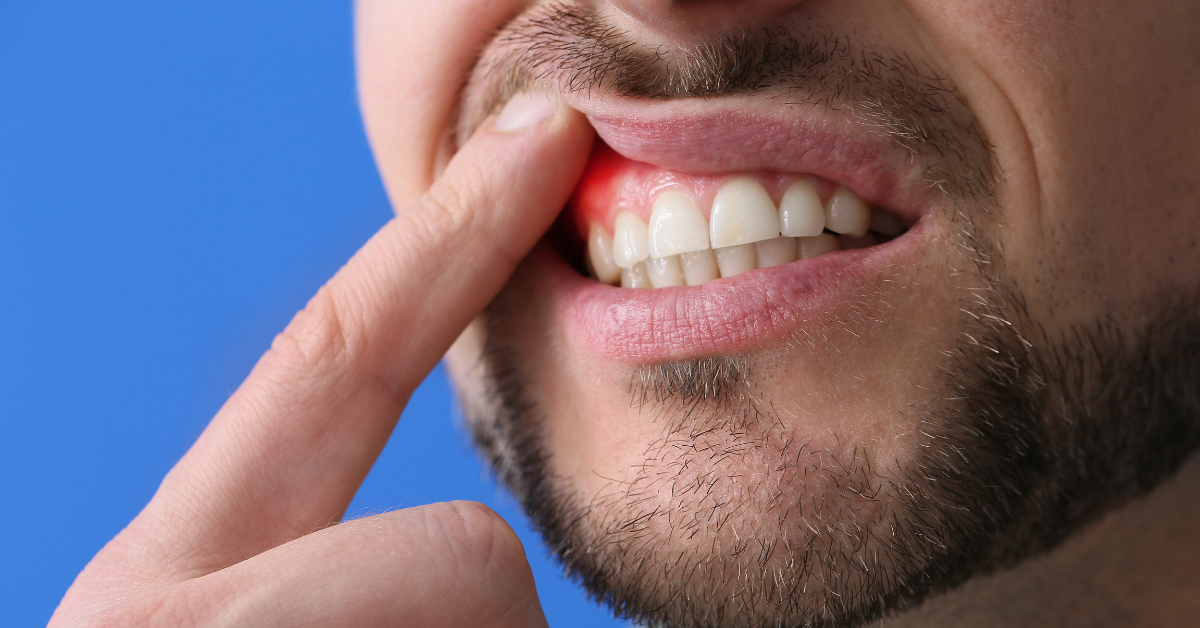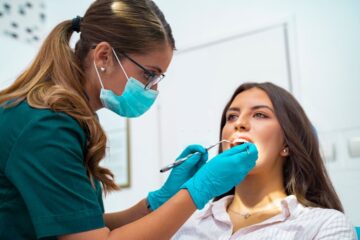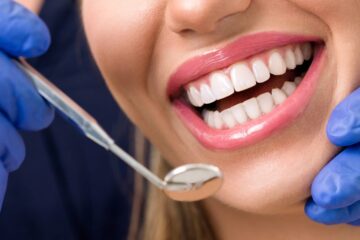Just as a gardener straightens the paths to give flowers the best chance to thrive, you might wonder if straightening your teeth with Invisalign can create a healthier environment for your gums. Periodontal disease, a shadow lurking in the corners of oral health, affects not just your gums but can have far-reaching implications for your overall well-being.
Invisalign, known primarily for its aesthetic benefits, promises a less visible route to straighter teeth, but does it also offer a shield against the onslaught of gum disease? You’ve heard the claims about improved oral hygiene due to the ease of cleaning aligner-free teeth, yet the connection between these clear braces and periodontal health remains a topic ripe for exploration.
As you evaluate the potential benefits, consider how an unobtrusive treatment could tip the scales in favour of your gum health, and stay tuned to uncover if Invisalign is merely a cosmetic fix or a guardian of your periodontal garden.
Key Takeaways
– Periodontal disease is a chronic inflammatory condition affecting the tissues surrounding and supporting teeth.
– Invisalign, a clear plastic aligner, can help improve gum health in patients with periodontal disease.
– Invisalign’s removable design allows for better oral hygiene practices, reducing the risk of plaque buildup and gum disease.
– Invisalign treatment can lead to a reduction in plaque accumulation, decreased gingival inflammation, and improved periodontal pocket depths.
Understanding Periodontal Disease
Periodontal disease, commonly known as gum disease, is a chronic inflammatory condition that affects the tissues surrounding and supporting your teeth. It’s essential to understand that gum inflammation is the primary sign of periodontal disease. This condition starts with bacteria in your mouth that form plaque on your teeth. If not removed through daily brushing and flossing, plaque can harden into tartar, exacerbating gum inflammation and leading to the more severe stages of periodontal disease.
Several risk factors increase your susceptibility to periodontal disease. Poor oral hygiene is a significant contributor, as it allows plaque to build up. Smoking is another critical risk factor; it’s not only harmful to your overall health but also detrimental to your oral environment. Additionally, systemic conditions like diabetes can impair your body’s immune response, making it harder to fight off the infection that causes gum disease.
Genetics can also play a role, making some individuals more prone to periodontal disease than others, regardless of their oral care practices. It’s crucial to recognize these risk factors and maintain consistent oral hygiene along with regular dental check-ups to prevent or manage periodontal disease effectively.
Invisalign Basics Explained
Maintaining optimal oral health is crucial in preventing periodontal disease. Additionally, it’s essential to consider how orthodontic solutions like Invisalign can play a role in your overall dental care regimen.
Invisalign is one of the orthodontic alternatives that has transformed the way individuals straighten their teeth. Unlike traditional braces, Invisalign offers a less visible and more comfortable treatment option.
Here are some critical aspects of Invisalign to help you visualise its benefits:
– Clear Aligners: Invisalign consists of a series of custom-made, clear plastic aligners that fit snugly over your teeth.
– Removability: You can easily remove the aligners for eating, brushing, and flossing, promoting better oral hygiene during treatment.
– Advanced Technology: Utilising 3D computer imaging, Invisalign allows precise treatment planning and visualisation of your teeth’s movement throughout the treatment duration.
– Comfort and Convenience: The smooth plastic aligners are less likely to irritate your cheeks and gums compared to metal braces.
Treatment duration with Invisalign varies depending on the complexity of your case but generally ranges from 12 to 18 months. Throughout this time, you’ll receive a new set of aligners every one to two weeks, each slightly different from the last, to gradually move your teeth into the desired position. This evidence-based approach ensures a tailored treatment that addresses your specific orthodontic needs.
Invisalign’s Impact on Oral Hygiene
Invisalign’s design significantly enhances oral hygiene by allowing complete removal of the aligners for thorough cleaning, reducing the risk of plaque buildup and gum disease. Unlike traditional braces, which involve brackets and wires that can trap food particles and plaque, Invisalign aligners can be taken out before eating, drinking, brushing, and flossing. This advantage facilitates optimal oral hygiene practices, lessening the likelihood of periodontal problems.
You’ll find that maintaining your oral health is more manageable with Invisalign. By diligently rinsing and cleaning the aligners, you prevent the accumulation of harmful bacteria. Compared to braces, Invisalign’s removability negates the complications of flossing around wires and brackets, which can be an arduous process and often leads to inadequate cleaning. This removability feature is particularly beneficial in preventing orthodontic relapse caused by periodontal disease, which can compromise tooth stability.
Moreover, Invisalign’s impact on oral hygiene extends to regular dental check-ups. With the aligners out, your dental professional can perform more effective cleanings and examinations. In the braces comparison, Invisalign’s minimal interference with dental care can foster a healthier oral environment, pivotal in circumventing the onset or progression of periodontal disease.
Case Studies: Invisalign and Gum Health
Building on the understanding of how Invisalign enhances oral hygiene, let’s examine real-world case studies that shed light on its effects on gum health. Clinical evidence demonstrates that Invisalign isn’t just an esthetic treatment alternative but also a viable option for improving periodontal conditions.
One study observed that patients with periodontal disease showed significant improvement in gum health following Invisalign treatment, as the aligners made it easier for them to maintain oral hygiene compared to traditional braces.
Consider these documented observations from case studies:
– Reduction in plaque accumulation: Patients were able to brush and floss more effectively, leading to a decrease in the buildup of harmful plaque.
– Lowered inflammation and bleeding: Consistent oral care facilitated by Invisalign usage resulted in reduced gingival inflammation and bleeding on probing.
– Improved periodontal pocket depths: Invisalign therapy helped in reducing pocket depths, a crucial indicator of gum health.
– Prevention of orthodontic relapse: By maintaining proper alignment, Invisalign reduced the risk of orthodontic relapse, which can contribute to periodontal issues.
These findings underscore Invisalign’s role in not only straightening teeth but also in promoting a healthier oral environment that can potentially mitigate the progression of periodontal disease.
Aligners and Periodontal Disease Management
Clear aligners, such as Invisalign, play a pivotal role in managing periodontal disease by facilitating improved oral hygiene practices and reducing factors that contribute to gum deterioration. You might already know that misaligned teeth can harbour bacteria, leading to plaque buildup and inflammation—key culprits in periodontal disease. By correcting misalignment, Invisalign can mitigate these misaligned consequences, allowing for easier access during brushing and flossing, and thus a more effective removal of plaque.
Unlike traditional braces, which can complicate oral hygiene due to their intricate network of wires and brackets, Invisalign aligners are removable. This feature is crucial for periodontal health, as it enables you to maintain a thorough cleaning routine, reducing the risk of plaque accumulation and gingivitis. Moreover, Invisalign’s custom-fitted design minimises irritation and damage to the soft tissues of the gums, which can be a concern with alternative orthodontic appliances.
Treatment alternatives, such as traditional braces, may still be used in managing periodontal disease; however, Invisalign offers a distinct advantage due to its minimal interference with daily oral hygiene practices. As part of your periodontal disease management, it’s essential to discuss with your dental professional whether Invisalign is a suitable option for you.
Frequently Asked Questions
Can Invisalign Treatment Lead to an Increased Risk of Cavities, Which Could Indirectly Affect Periodontal Health?
Invisalign treatment doesn’t inherently increase cavity risk if you maintain proper oral hygiene and clean your aligners regularly, thus safeguarding your periodontal health.
How Does the Cost of Invisalign Compare to Traditional Braces When Considering the Overall Treatment of Periodontal Disease?
You’ll find Invisalign’s cost comparison to traditional braces varies, often depending on treatment duration and complexity. For periodontal issues, both options require careful financial consideration alongside your dental professional’s recommendations.
Are There Specific Dietary Restrictions or Modifications Recommended During Invisalign Treatment to Prevent Exacerbation of Periodontal Disease?
You’ll need to prioritise aligner cleaning and careful food choices during Invisalign treatment to avoid worsening periodontal issues. Stick to non-sticky, low-sugar foods and maintain diligent oral hygiene practices.
What Is the Protocol for Managing Acute Periodontal Flare-Ups While Undergoing Invisalign Treatment?
When you notice a flare-up, acute intervention is key. You’ll need to pause your Invisalign treatment and seek prompt dental care to address the issue and prevent further periodontal deterioration.
How Does the Material of Invisalign Aligners Interact With the Microbiome in the Mouth, and Could This Affect Periodontal Health Over the Long Term?
Invisalign’s material is designed for biocompatibility, minimising adverse microbiome adaptation. Studies suggest it doesn’t negatively impact periodontal health long-term, but maintaining good oral hygiene is crucial while using aligners.
Conclusion
In conclusion, you’ll find that Invisalign can indeed support your fight against periodontal disease.
With 47.2% of adults over 30 suffering from some form of gum disease, maintaining optimal oral hygiene is crucial.
Invisalign aligners facilitate easier cleaning, potentially reducing plaque buildup and improving gum health.
Remember, while they aid in better dental care, they’re part of a larger strategy against periodontal disease, which should include regular dental check-ups and proper oral hygiene practices.





